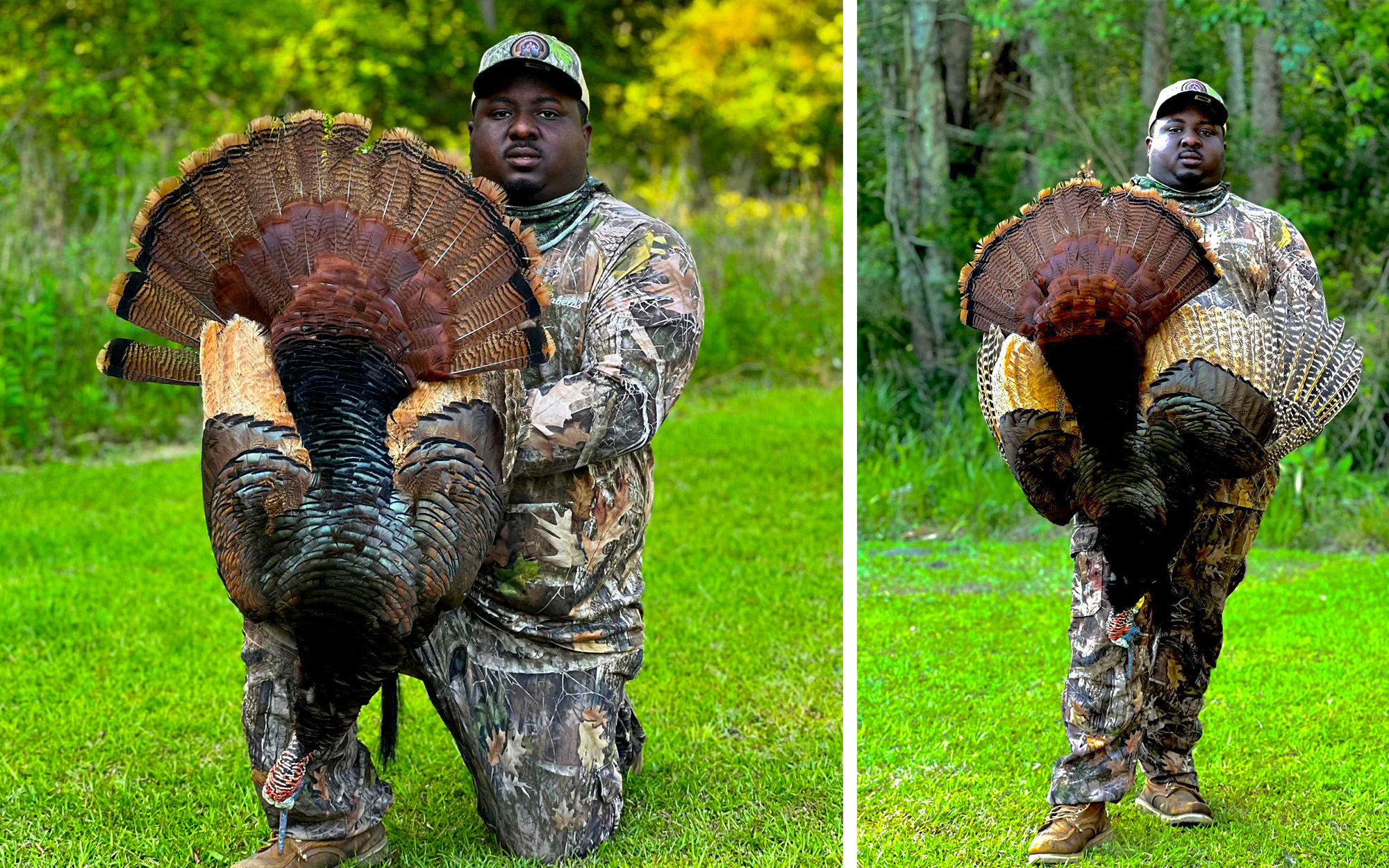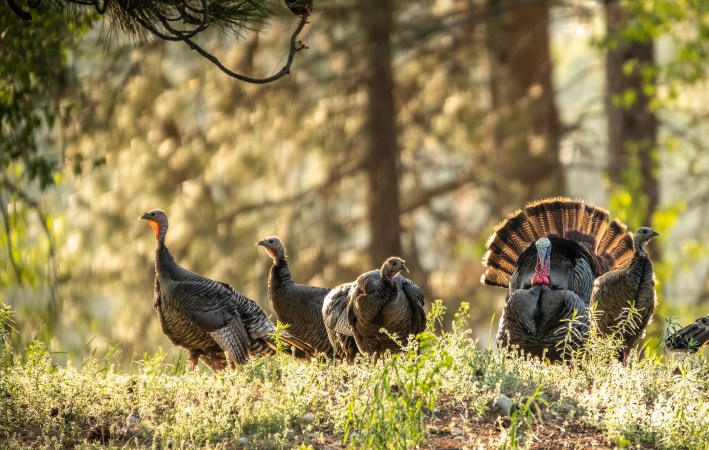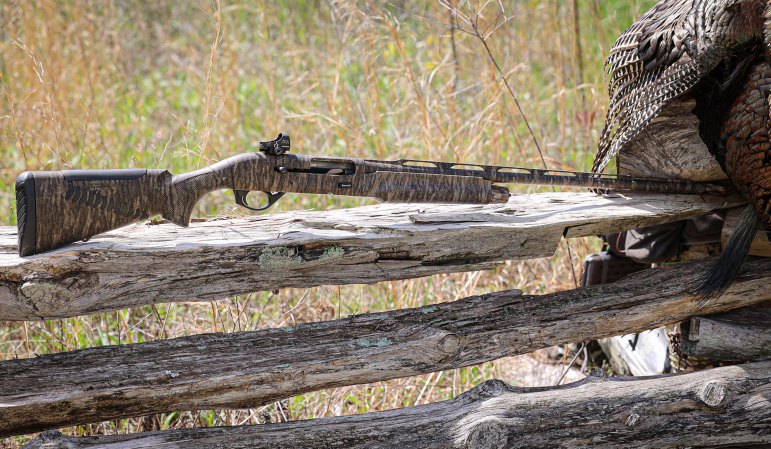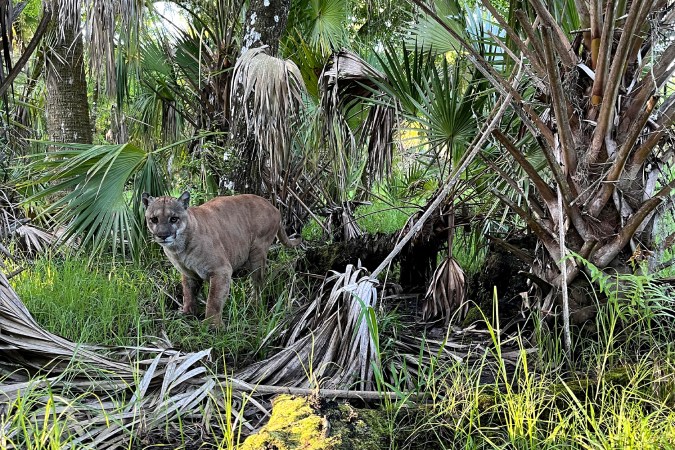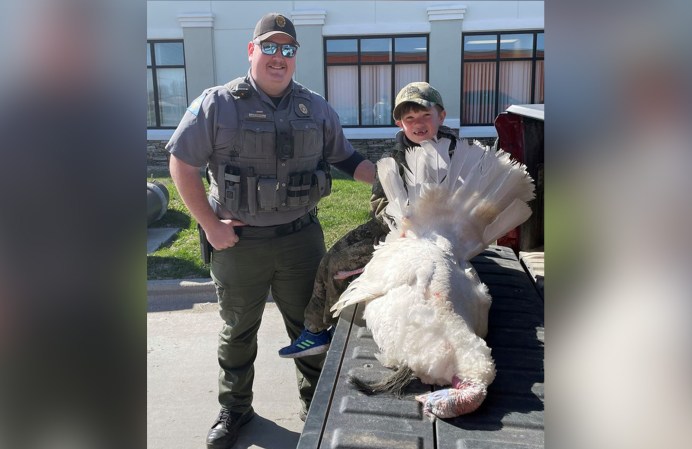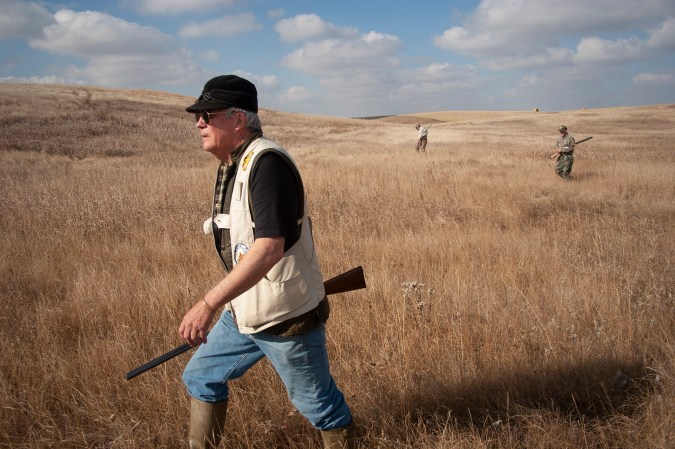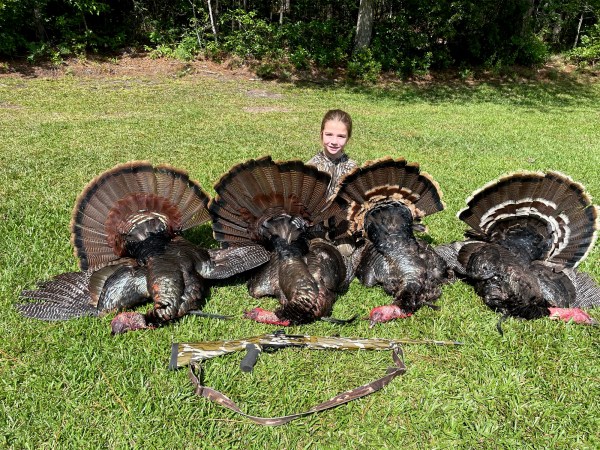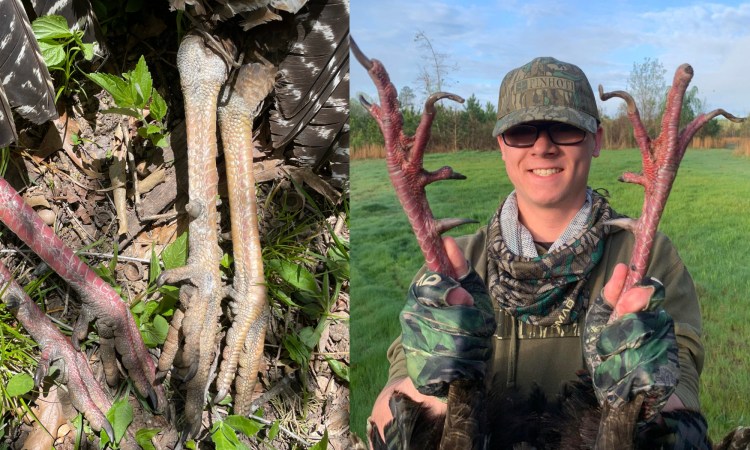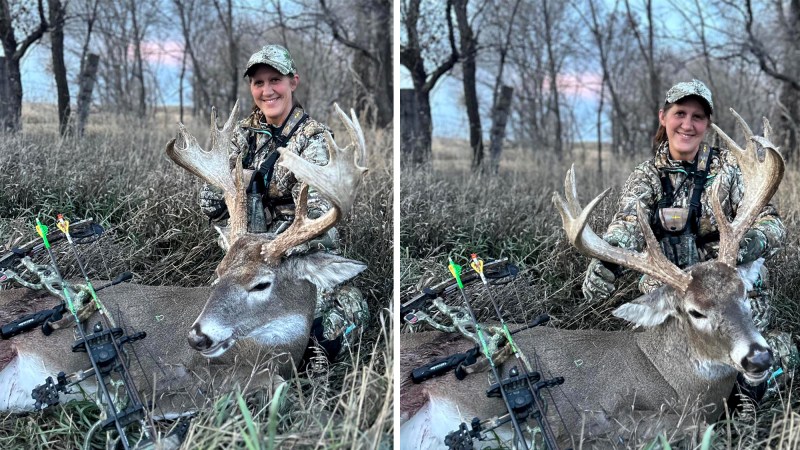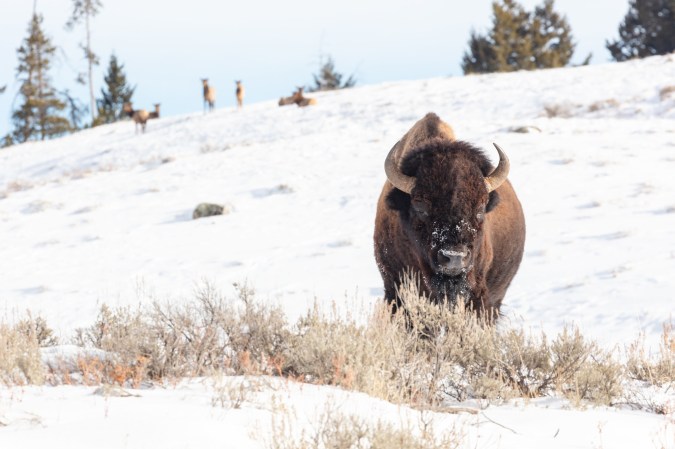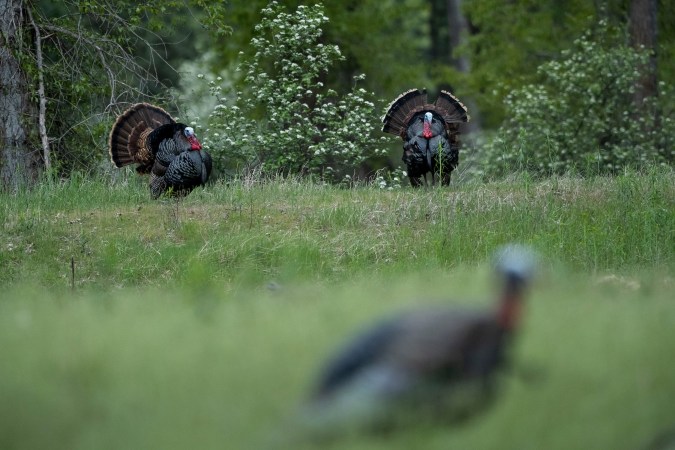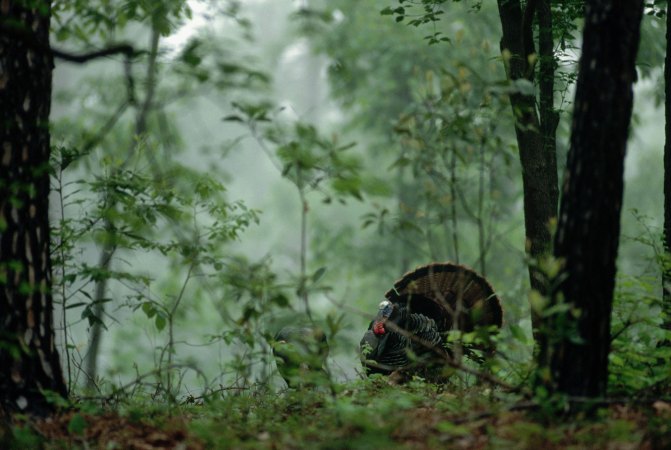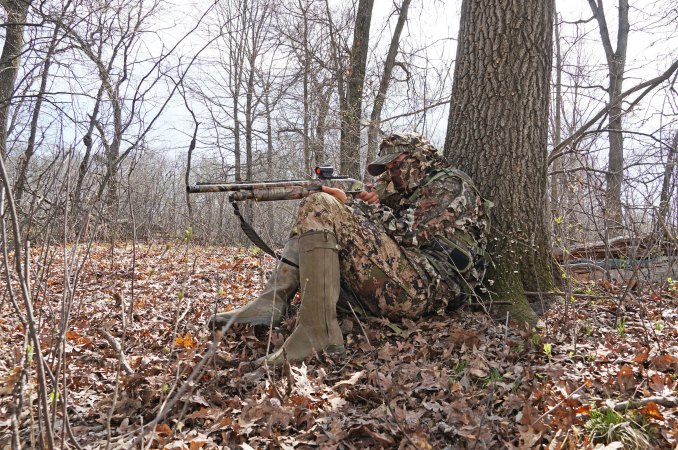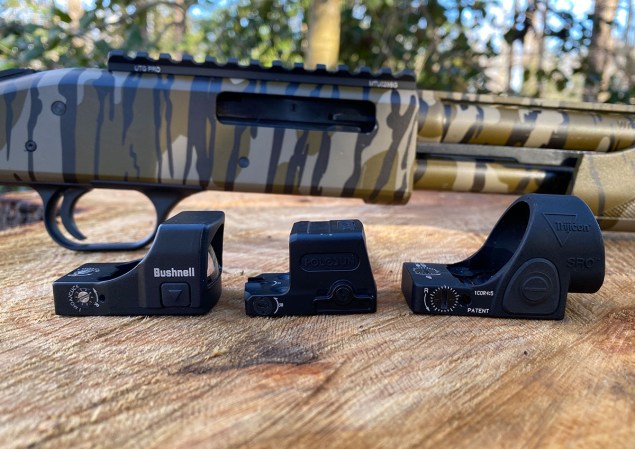It was a wet and muddy morning on April 16 when Jamal Lane tried driving his truck into a pasture in the dark. He was on his way to hunt a specific turkey: a rare, red-phase gobbler that he’d first seen last season, but that had already gotten away from him twice.
Their last encounter was just the week before, when the tom came in with hens but wouldn’t work into shotgun range.
“I knew not to ever give up chasing that turkey,” Lane tells Outdoor Life. “And I prayed hard that I’d be successful.”
Before he could find success, though, he had to make it into the pasture before sunrise.
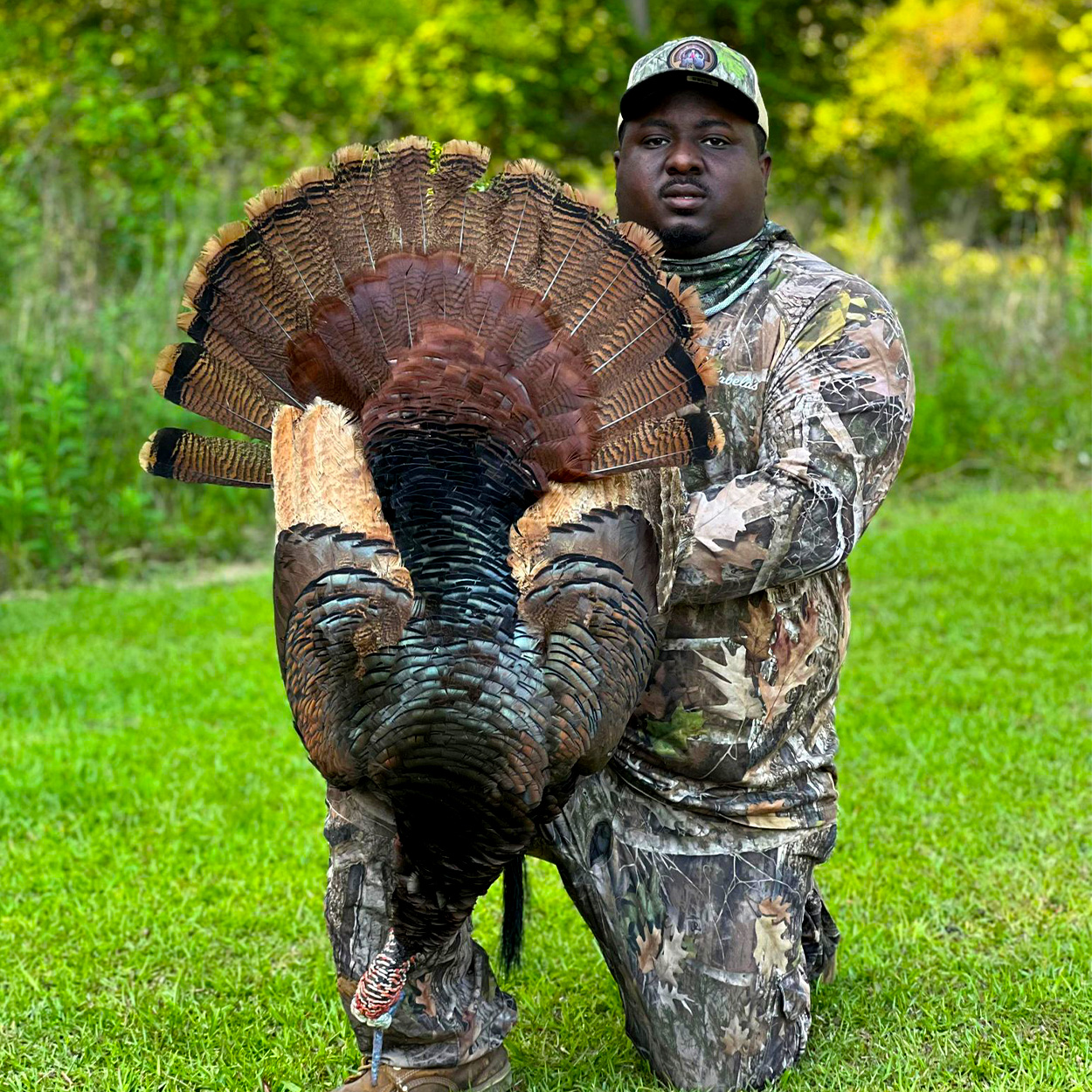
“My truck started bogging down from heavy rain that night,” says Lane, a 31-year-old farmer and landscaper from Chula, Georgia. “I didn’t want to get stuck, so I stopped, grabbed the old shotgun my grandpa gave me years ago, and headed to a place to call that red bird.”
His spot was at the base of a big oak on the edge of the pasture. After staking out his decoys, Lane settled against the trunk. He owl hooted and heard a gobble right away from about 100 yards. He also heard some other turkeys gobbling from a different direction, but Lane thought the closest bird had to be the red gobbler. He was right, and it came in fast.
“He flew down and came from my right, up a fence line and along the cow pasture,” Lane says. “He was hot, really turned on and gobbling almost non-stop.”
By the time he worked under the fence and saw Lane’s decoys, the lone gobbler was already strutting.
“He was much hotter than he’d ever been before when I hunted him. I couldn’t believe how awesome he looked,” Lane says. “Fanned out and puffed up, he was just beautiful in the morning light.”
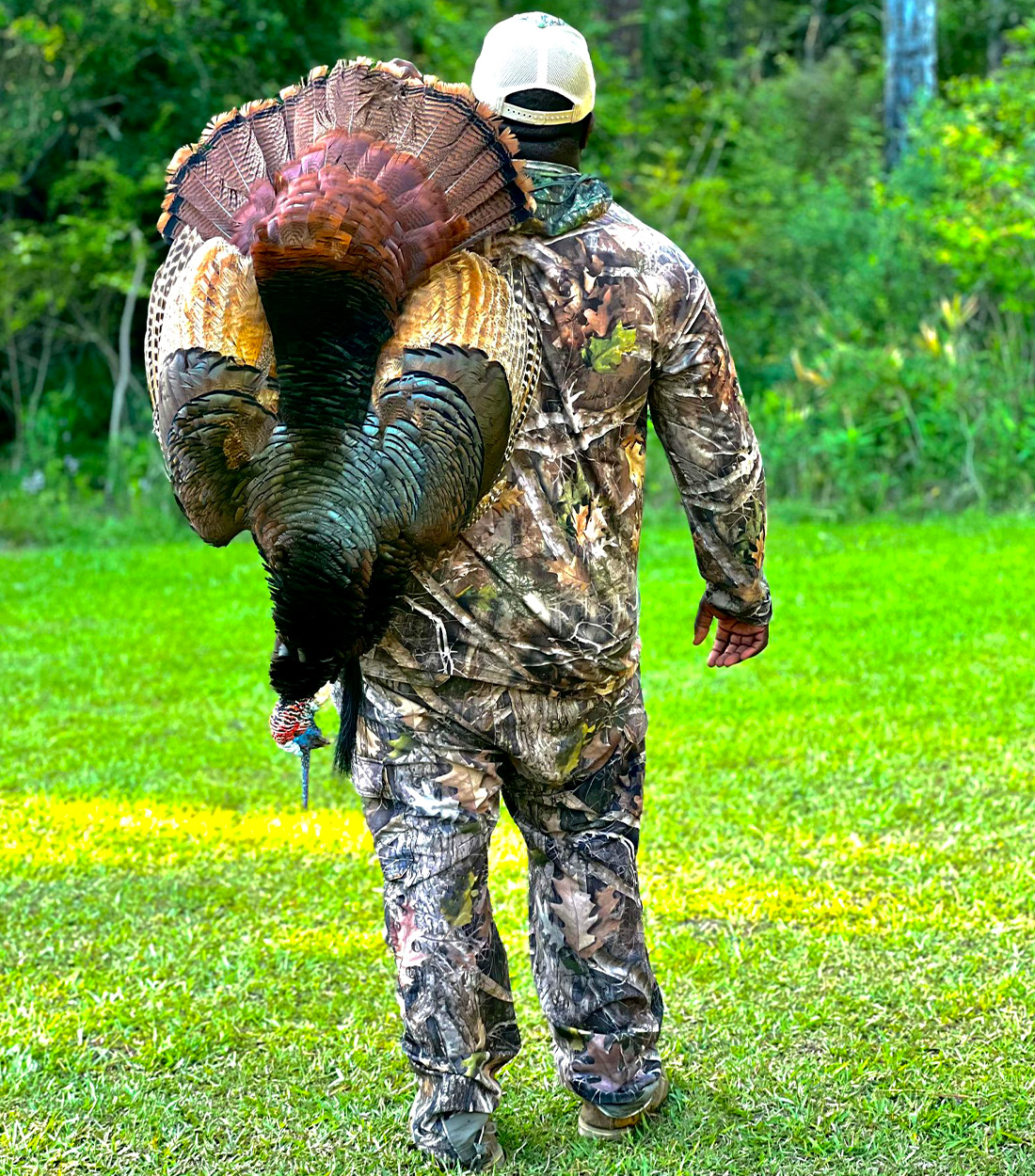
Lane waited patiently and let the tom work closer to the oak tree. It was 7:13 a.m. when the bird reached 40 yards. Lane raised and fired his 12-gauge Winchester 1200 and rolled the bird over dead.
The turkey had 1.25-inch spurs and a 12-inch beard. Lane thinks it was around four to five years old, as he’d been chasing it for two seasons in a row. It was his second tom of the spring, so he was tagged out for the season.
Biologists with the Georgia DNR Wildlife Resources Division have seen pictures of Lane’s bird, and WRD wild turkey coordinator Emily Rushton identified it as an “erythristic” turkey. She explained to Georgia Outdoor News that this is the second most common color phase for wild turkeys, with smoke phase being the most common.
Read Next: Hunting the Legendary Cohutta Gobbler, From the Archives
“Erythrism occurs when dark pigments are not as prevalent in the feathers, leading to a red color in the plumage,” Rushton said. “I am not sure how many birds have this color phase, but it is pretty rare. I only hear about a couple a year.”
Lane, a dedicated hunter and angler, has been chasing turkeys for about six years. He mostly hunts on private land in Tift County. He’s certainly paid his dues and mentions a sit he had a few years ago when he worked a gobbler for four hours before he could get it into gun range. But he says the red bird he tagged last month is one of his favorite turkey hunts yet. He plans to have a full fan and cape mount made by a local taxidermist.
“I said my prayers about getting that beautiful gobbler, and I was so happy,” Lane says. “I’d hunted him so hard and long, and finally my prayers were answered. I thanked God for the gift I got.”

